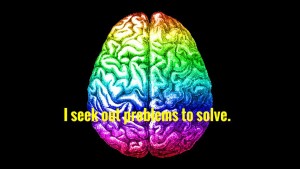The M in STEM-Persevering When Problem Solving Gets Tough
Science, Technology, Engineering and MATH. These are all vital components in the wave of new education that’s preparing our 21st century students for the future. There are a few Chicago educators that are bringing the M in STEM to life…big time! Jeff Erickson is a fifth grade teacher at Alfred Nobel Elementary School. His ImagineIT project focuses on viewing the real world through a mathematical lens. He is working on developing a mathematician mindset in all of his students, as he accentuates that math is fun through everyday instruction! His ivideo prepares his students for a world of learning by seeing, thinking, acting and communicating like mathematicians, even when problem solving gets tough! The design of his ImagineIT project “cultivates” student perseverance when tackling difficult math problems. On his website, Erickson shares, “Perseverance will be assessed based on the student’s willingness to continue uncovering problems and not giving up.”
Tim Nuttle also teaches mathematics, but to high school juniors and seniors. He sees a constant struggle with mathematical perseverance at the high school level as well. Mr. Nuttle shares that one of his biggest obstacles when teaching this age group is the inability to finish given problems, specifically word problems. A student’s inability to get started and the fear of making mistakes, both play a major role in lack of endurance through difficult mathematical situations. Nuttle feels that implementing a flipped classroom is a good start in solving this problem. He hopes by initiating a flipped classroom method, students will strengthen their ability to communicate mathematically both inside and outside of the classroom. Nuttle wants to witness a strong ability to problem solve within his classroom by successfully tackling these three components:
(a) determine the best way to approach the problem, including deciding where to begin, given their background and knowledge
(b) following through on their initial strategy, whether it is fruitful or not
(c) not being afraid to either pursue an avenue that seems risky or to have the confidence in their abilities to start over when things go wrong
On his website, he shares, “These three results are key to the discipline of math (and life in general) because being able to apply what one has learned in a real-world way is the only reason why we learn math.”
From elementary school to high school, math perseverance is an essential part of being successful in mathematics. Both Jeff Erickson and Tim Nuttle agree that by taking small steps, despite the age, children can learn to persevere.

